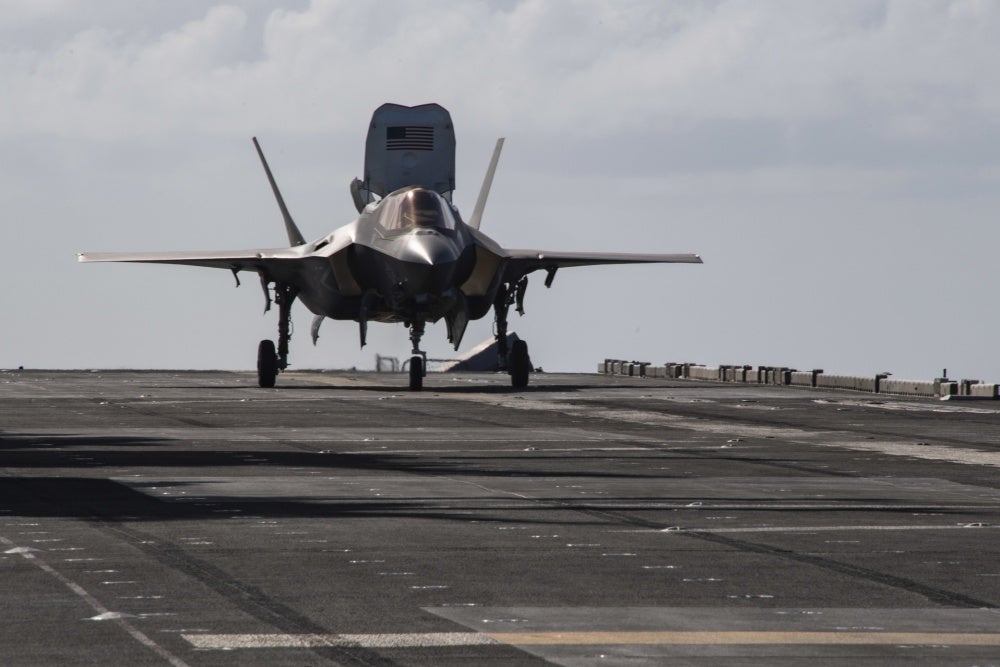F-35Bs Bolster USS Essex Amphibious Ready Group Capabilities
The F-35B has recently returned from its first combat deployment on the USS Essex, LHD-2, as part of the 13th Marine Expeditionary Unit. The eight-month deployment, which departed the US last July, returned at the beginning of May this year, and operated in both the Pacific and Middle East. The Marines’ F-35Bs flew combat missions over Afghanistan, Iraq, and Syria in support of ongoing US missions.
US amphibious assault ships previously embarked the AV-8B Harrier II, which was almost entirely dedicated to ground attack, though it could carry the full suite of US air to air missiles. However, the Harriers are significantly hampered by a full deck of issues in carrying out the air to air mission, and neither the Marines or Navy have planned to have them use those abilities. The commanding officer of the 13th MEU, Col. Chandler Nelms said “The aircraft we had before was predominantly a close-air support weapon, so for any type of air threat we were relying either on the naval surface force ship or we were relying on purple (joint) air to provide that top cover for anti-air warfare,” in a talk given to the Potomac Institute.

EAST CHINA SEA (March 22, 2019) – Sailors observe an F-35B Lightning II aircraft, attached to the 4th Marine Regiment, land on the flight deck of the amphibious assault ship USS Wasp (LHD 1). (U.S. Navy photo by Mass Communication Specialist 1st Class Daniel Barker)
It is clear to the Navy and USMC that F-35Bs flying off the straight-deck Wasp-class and America-class amphibious assault ships cannot replace a carrier strike group, with a full fledged nuclear carrier and accompanying airwing, the combination has shown promise. The Essex, while on deployment to the Persian Gulf, acted as a mini-carrier for 5th Fleet, based out of Bahrain, until the last few weeks of their deployment to the region. In the meantime, they were able to fulfil many of the air and sea control missions that would normally require a CVN present.
Col. Nelms continued on, saying, “We now have an all-mission-capable aircraft that’s also capable of stealth operations and has fantastic sensors at the disposal of the MEU commander… but also at the disposal of the commodore as he seeks to maintain maritime and air superiority. So the difference is vast, we’re still working through how we tie all that in… What we do have to remember is we only have a small number (of jets), right, so …we have limitations on an amphibious ship that’s unlike a carrier.”

